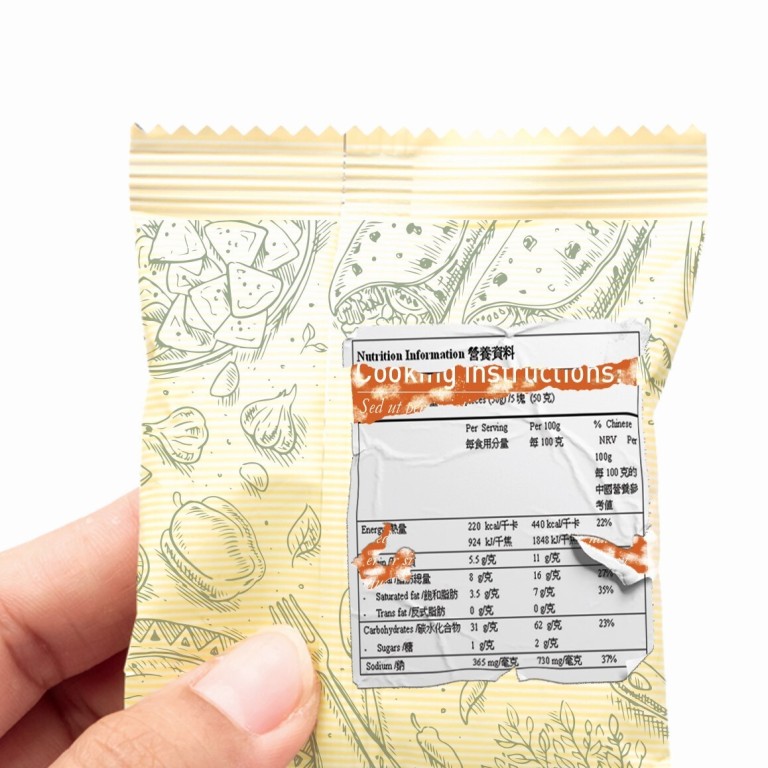
In Hong Kong, nutrition labels often obscure more than they inform – why?
- The Nutrition Labelling Scheme was introduced 10 years ago with the intention of standardising labels
- But with the sticker stuck willy nilly on a product, they can end up being more infuriating than informative
Thanks to Covid-19 curfews on eating out, lately I’ve been cooking at home more than I’m used to. I’ve also reached the time of life at which you forget the odd thing in the kitchen – recently, for instance, how long it takes to cook a particular variety of pasta.
There I was, water boiling nicely, poring over the packet instructions in search of the specified cooking time. And there it wasn’t. Or rather was – right under the obligatory and irremovable HKSAR stick-on nutrition label.
The snappily titled Food and Drugs (Composition and Labelling) (Amendment: Requirements for Nutrition Labelling and Nutrition Claim) Regulation 2008 has been with us for a decade now, having come into force in 2010. It is not, I agree, the most troubling piece of legislation enacted here over the past decade, but it is one of the most troublesome.
Particularly if you have just torn a fettuccine packet to shreds trying to separate it from what is essentially a Post-it note backed with super glue.
Food nutrition labels: how to make healthier choices
We all know where roads paved with good intentions lead, and when those intentions are bureaucratic, the journey is usually short. The idea behind introducing special labelling for pre-packaged edible goods for sale in Hong Kong was to standardise and clarify the presentation of nutritional information, so consumers could make informed choices.
It hasn’t quite worked out that way. The print on the auxiliary labels is usually unreadably small, at least for anybody with less than 20/20 vision and without powerful reading glasses. The labels also tend to mask other information that consumers want, and in some cases need.
Not just less competent cooks who have had to resort to Google to find out how long it takes to achieve al dente ribbons of pasta. People with serious allergy issues can also have difficulty in establishing whether or not a product is safe for them.
The problem is particularly acute with small items, on which much of the printable surface area of the original packaging can be obscured. The manufacturer’s professionally printed label is usually more legible than the DIY Hong Kong compliant one pasted over it. But if you try to peel the slip off, the text beneath it is almost always ripped away by the adhesive. Could these pasties, perhaps, be affixed with a glue that would make them easily removable?
Thoughtlessly placed nutrition labels could often easily have been stuck to print-free areas of packaging – the lid or the base of a jar for example. Perhaps the importers, whose business addresses those labels helpfully bear, might appreciate some constructive advice as to where to stick them?

